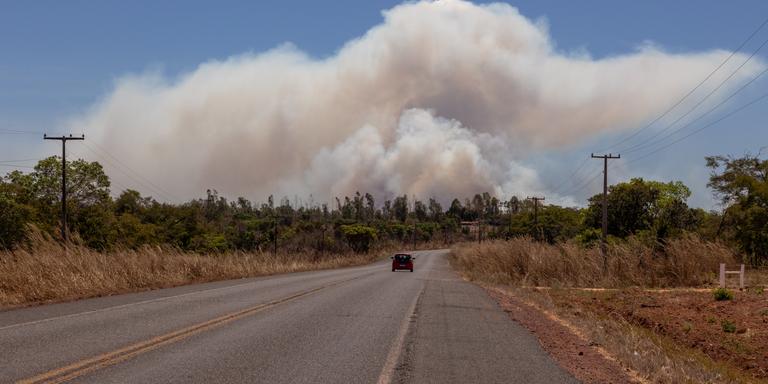


How agribusiness is consuming Brazil's Cerrado savanna
FeatureHalf of northeastern Brazil's ecosystem has been amputated to make way for pesticide-laden fields of soya, corn, sorghum and cotton. Its destruction and the hazardous drying out of its soil seem unstoppable.
In Nordeste, some people call them "Hiroshimas." The enormous plumes of smoke, rising high into the sky over the fields, sometimes look like atomic mushroom clouds. In Brazil, the expression is no exaggeration when it comes to describing the severity of the destruction caused by the fires currently raging across the Cerrado savanna.

On the outskirts of Uruçui, a city in the western part of the state of Piaui, fire was everywhere. The roadsides were red with embers and black with ash. Flames danced, leaping over the asphalt, often posing a threat to passing trucks. In mid-August, when Le Monde did this reporting, Uruçuí briefly held the title of the city with the highest number of fires in the whole of Brazil. The unenviable award was hard to bear given the extent of Cerrado's devastation. The Brazilian Institute for Space Research recorded over 23,000 fire outbreaks this year in the savanna, with at least 5,000 square kilometers reduced to ashes, a 20% increase compared to the same period in 2022. It's the largest destroyed area in a decade in the country.
Uruçui did not seem destined for such a fate. Seen from the air, this town with its indigenous name ("big bee" in Tupi), almost 1,000 kilometers from the coast, is just a dot lost on the map of the Sertao, a poverty-stricken polygon in the Nordeste. Its 25,000 inhabitants are spread between the peaceful Parnaiba River, nicknamed the "old monk," which flows into the Atlantic, and the vast plateaus perched at an altitude of 400 meters – the chapadoes – where the heat is stifling.

The city is also at the heart of the Cerrado, a savanna that once covered 2 million square kilometers (half the size of the European Union). Only the Amazon surpasses it both in terms of size and richness. This land with its reddish soil and warm climate, dotted with shrubs, bushes and streams, is the habitat of the tapir, the jaguar, the giant anteater and 320,000 other animal species. Home to 5% of the world's biodiversity, it also serves as a crucial drainage basin and an enormous carbon sink. Yet, this hasn't prevented its industrial destruction: In just a few decades, half of its surface area has already been cleared.
Not a single bush survived
All this devastation is to make way for the fields owned by fazendeiros – major landowners and agribusiness traders. On Uruçui's chapadoes, plowed fields stretch as far as the eye can see. Not a single bush has survived, in what was once a rich forest of thickets and shrubs. This landscape of desert-like, plowed fields is now typical of "Matopiba," the region made up of the northeastern states of Maranhao, Tocantins, Piaui and Bahia: It's Brazil's new agricultural frontier.
You have 81.96% of this article left to read. The rest is for subscribers only.
